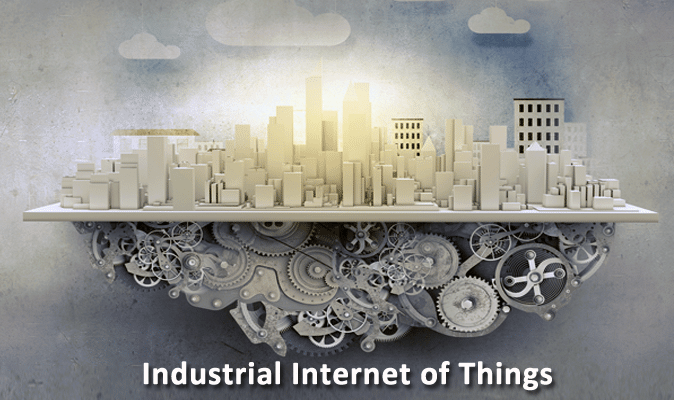
Internet of Things, or simply known as IoT, is a giant network of connected ‘Things’ that is things-thing, people-things or people-people. It can be applied on a broader scale to things like transportation networks, connected cars, smart retails, connected health, smart cities and so forth. For instance, with the help of updated GPS tracking system, you can take a different route, especially during bad traffic. The sensors in your car automatically open the parking gate of your company. These are few conveniences made possible into our daily lives by IoT.
What is IIoT?
Industrial IoT (IIoT) is the application of IoT to the manufacturing industry, but it is not limited to that only. McKinsey estimates that IoT will have potential to drive productivity across multiple industries including manufacturing, healthcare and mining.
Applications include features such as:
Process optimisation, especially in manufacturing and logistics
Efficient use of natural resources, including smart meters and smart grids for water and electricity consumption
Remote health-care delivery
The hype
The overall idea of gaining access to cheap processing, massive bandwidth, cloud-based applications, unending storage and uninterrupted connectivity are driving forces behind the IIoT. As a result of all this, businesses get a chance to improve the efficiency of their business, disrupt old and useless models and above all, provide better services to their customers.
The time when a developer comes in
IIoT is everywhere now — connecting millions of devices, machines, sensors and systems across the globe. It is pretty much more than an overnight sensation. In the course of past 50 years, technological milestones, be it big or small — from some large-scale system architecture breakthroughs to the most humble “Eureka” moments — have led to today’s IIoT. Moreover, they are still informing predictions for tomorrow’s industrial landscape.
However, the concept turns out to be a daunting prospect for numerous industrial manufacturers these days. With limited technology, standardisation, companies would be hard-pressed to implement their own IIoT systems without a significant investment in the development of proprietary tools that may or may not be compatible with global IIoT systems further down the road. This means software developers will become in greater demand than ever. But what developers can do to get the most out of our increasingly connected world?
Consider API as the backbone of IoT
If you are looking for numbers, we can go on and on explaining what IoT matters to an everyday developer. In fact, McKinsey finds that forty percent of the whole value of IoT hinges on its interoperability.
To reach its full potential, privacy and security concerns are supposed to be addressed adequately. But this won’t happen until and unless the devices aren’t connected. This leaves API as the driving force of the IoT revolution offering endless opportunities for a developer.
API testing staves off the hugely costly recalls that come if things simply fall in its place. The testing automation will have to be combined with manual testing to check if that light turned on and if it continues to turn on only when it’s supposed to. But that doesn’t mean it will be making tomorrow’s headlines. It will remain a silent partner delivering magic from behind the scenes. And maybe this is the reason why API developers have a load of influence but without any fame.
IoT is not just an aspect of industrial and business spheres
To cultivate all the data, IoT will raise demand for more and more apps anytime soon. In the current scenario, around 11 percent of mobile app developers work on professional apps but are earning $5,000 more a month than their consumer counterparts.
Again the real value will be obtained from APIs that eventually feeds all this data into the platform that will curate it into actionable insights. As a result, the demand for a software development company who have experience in the buzzing trends will continue to grow. The emergence to automate the interpretation of data brought in by millions and soon billions of devices in our always-on, always-connected near future.
Smart cities: Think globally, act locally
One of the biggest motivations to get involved in IoT is by simply being a part of this movement. If you are participating in the present, you will get to be a part of the future as well. Several reports reveal: “As municipalities seek to bolster their digital infrastructure to become ‘smart cities’, a need for a local developer who knows the community well can provide a value of high sorts. Each city will consist of a unique range of challenges that can be solved by none other than a nearby software development company.”
Despite big business promises, most cities don’t have the infrastructure in place yet or integrated apps but the isolated ones that work for individual local businesses. In order to make yourself present in your soon-to-be-smart city, start attending city council meetings and contacting your local representatives.
How else can a developer get Involved?
There is no doubt in the fact that all this fuss over Internet of Things could be a bit premature. But the next wave that is Industrial IoT seems like turning tables all around the world.
All of these aforementioned considerations have one thing in common, and that is it requires you to be a change. Take your digital transformation to the next level which involves strategy, collaboration, resiliency, mobilisation of company-wide efforts and flexibility. Last but certainly not the least, the best way to prepare yourself for the Industrial IoT is fiddling about and stay inquisitive.











































































